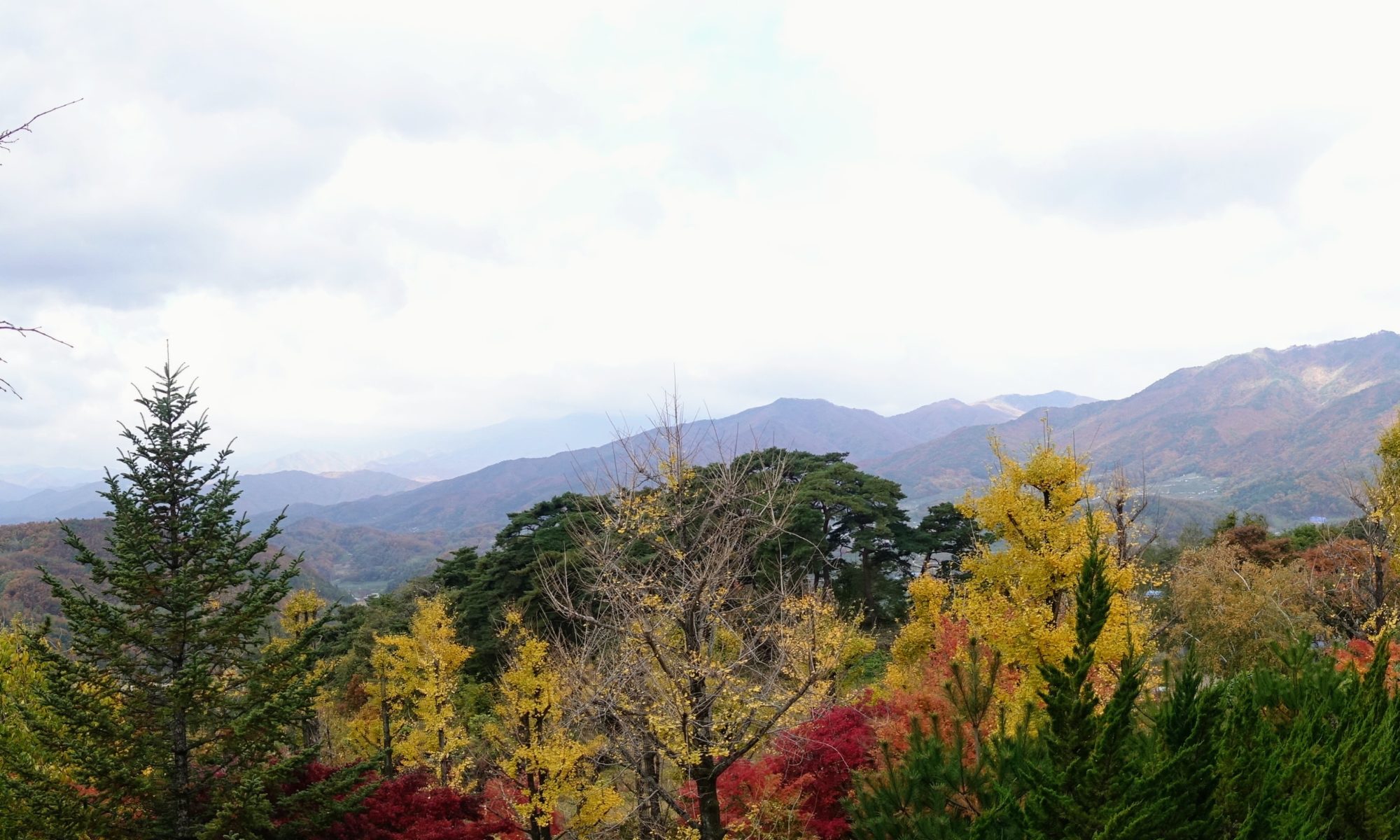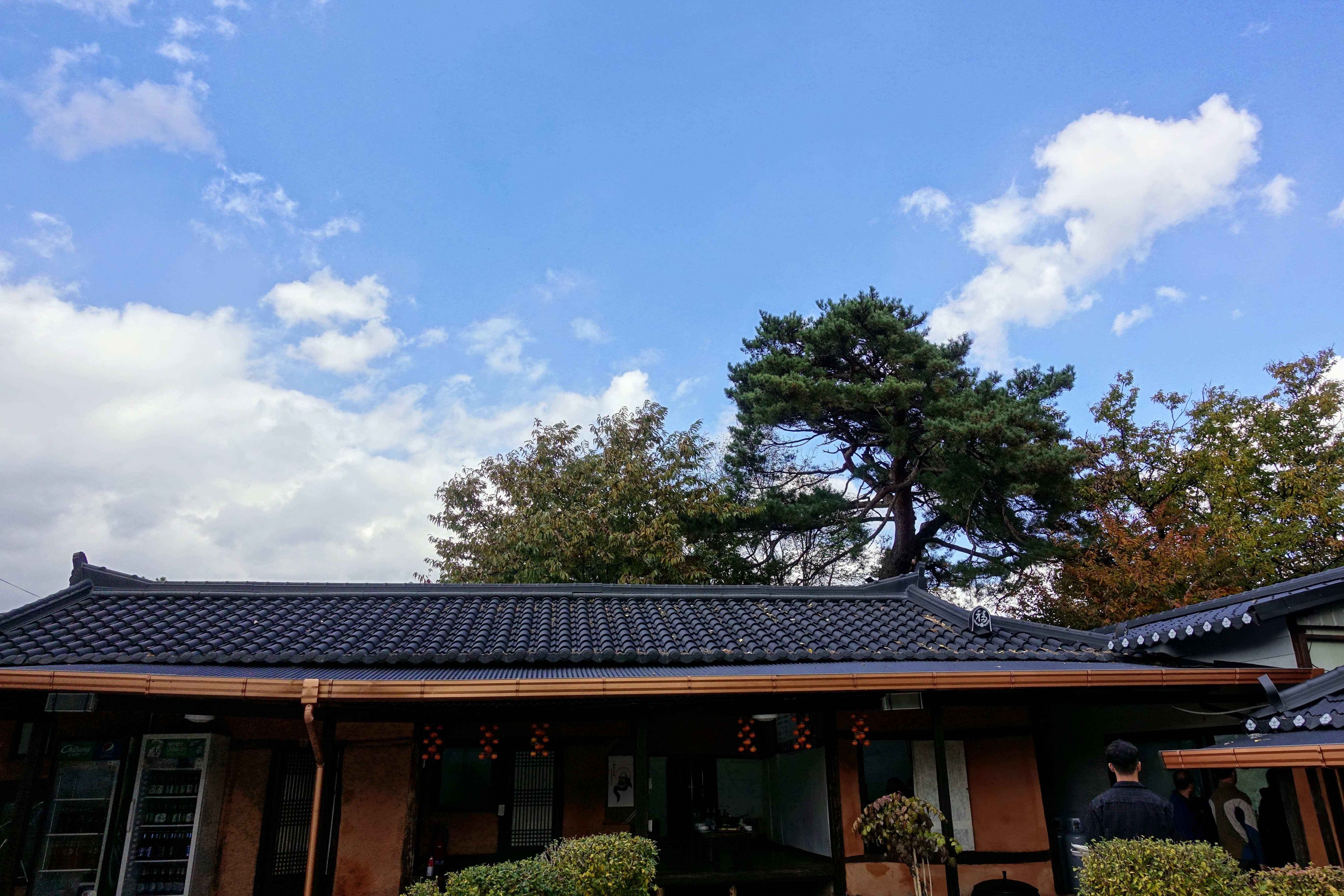I’m writing at a difficult moment. Today I woke up to the news that eleven Jews were murdered in Pittsburgh. I want to share this nice, happy thing in my life here in Korea because there is beauty and life in the world and I am committed to enjoying it. My first visit to Korea came less than a month after the 9/11 attacks, and many people asked me whether I still planned to come here and teach English for a year. My answer now was my answer then: as much as possible, I don’t ever want to let terrorists decide for me what to do or how to live.
Busloads of apples
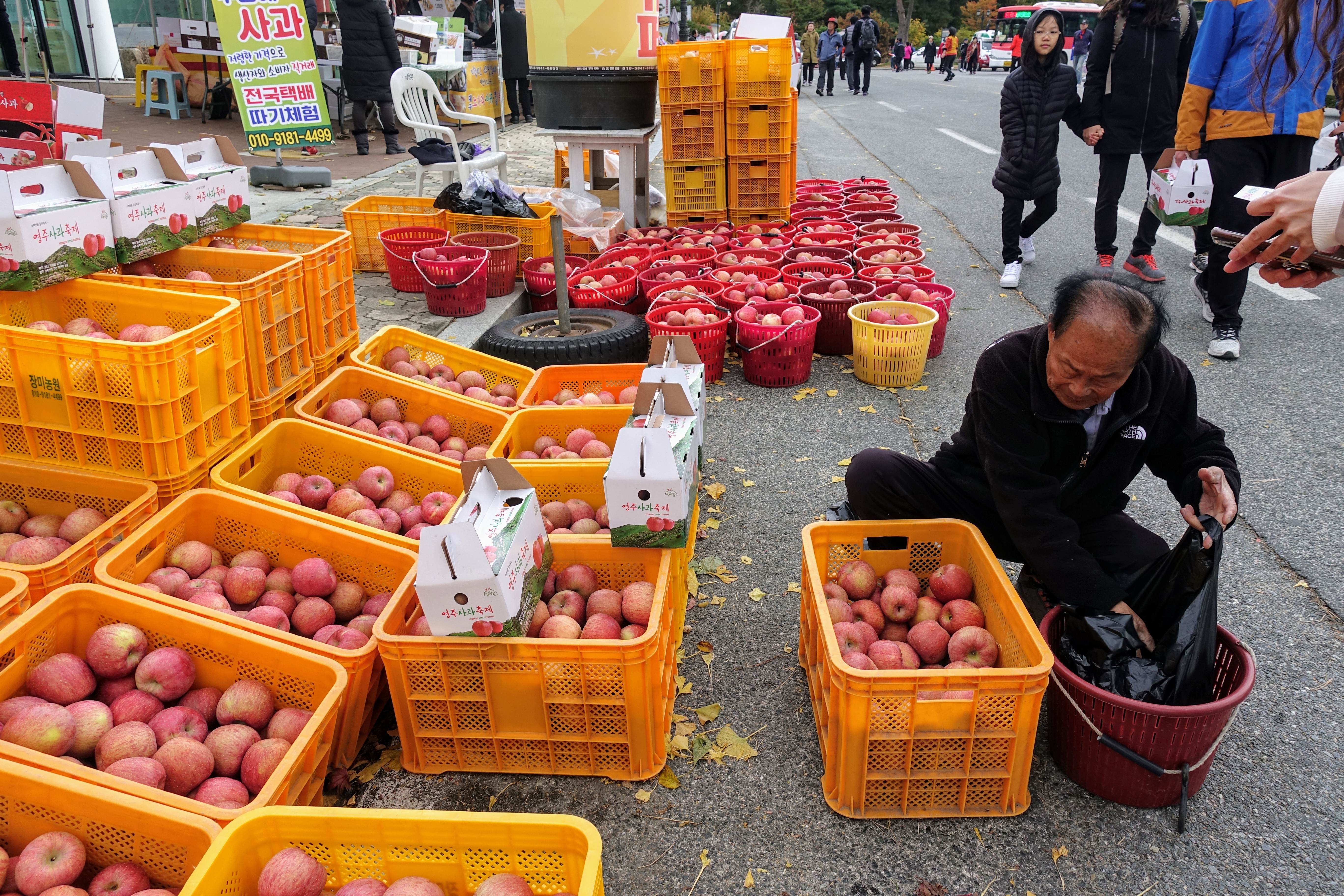
Apple farmers line the streets, old ladies with paring knives handing out samples, crates of their wares spread out for sale. Young men with batons direct traffic into special designated parking areas, while bus after bus rumbles in, belching out Korean tour groups led by tinny amplified voices. There’s a stage set up and rows of white plastic chairs, but at noon the Yeongju Apple Festival is still not quite underway.
There are a lot of ways to know you love a person, but one way is when she looks at the Apple Festival, looks at you, and suggests you get out quickly and go somewhere else.
Autumn leaves
We’d come to Yeongju and Buseoksa Temple for the autumn leaves. We drove down on a Friday afternoon of spattering rain and dropping temperatures, crossing the Sobaeksan range in deep fog, but when we arrived at Road to Buseoksa Pension, the stars had come out. We were the only customers at a nearby restaurant, eating a dinner of fish and tofu while the owners and their friends grilled off-the-menu samgyeopsal in the other room.
In the morning we headed up to the temple, which boasts Shilla stone monuments and statuary, a Goryeo wooden building that’s among the oldest still standing in Korea, and spectacular views. It was interesting to see the unusual architecture of the Goryeo main temple hall, which has support structures that are related to, but different from, the typical Joseon Dynasty style you see nearly everywhere in Korea. Because there was so much destruction during the Imjin War in the late 16th century, examples of earlier architecture are rare.
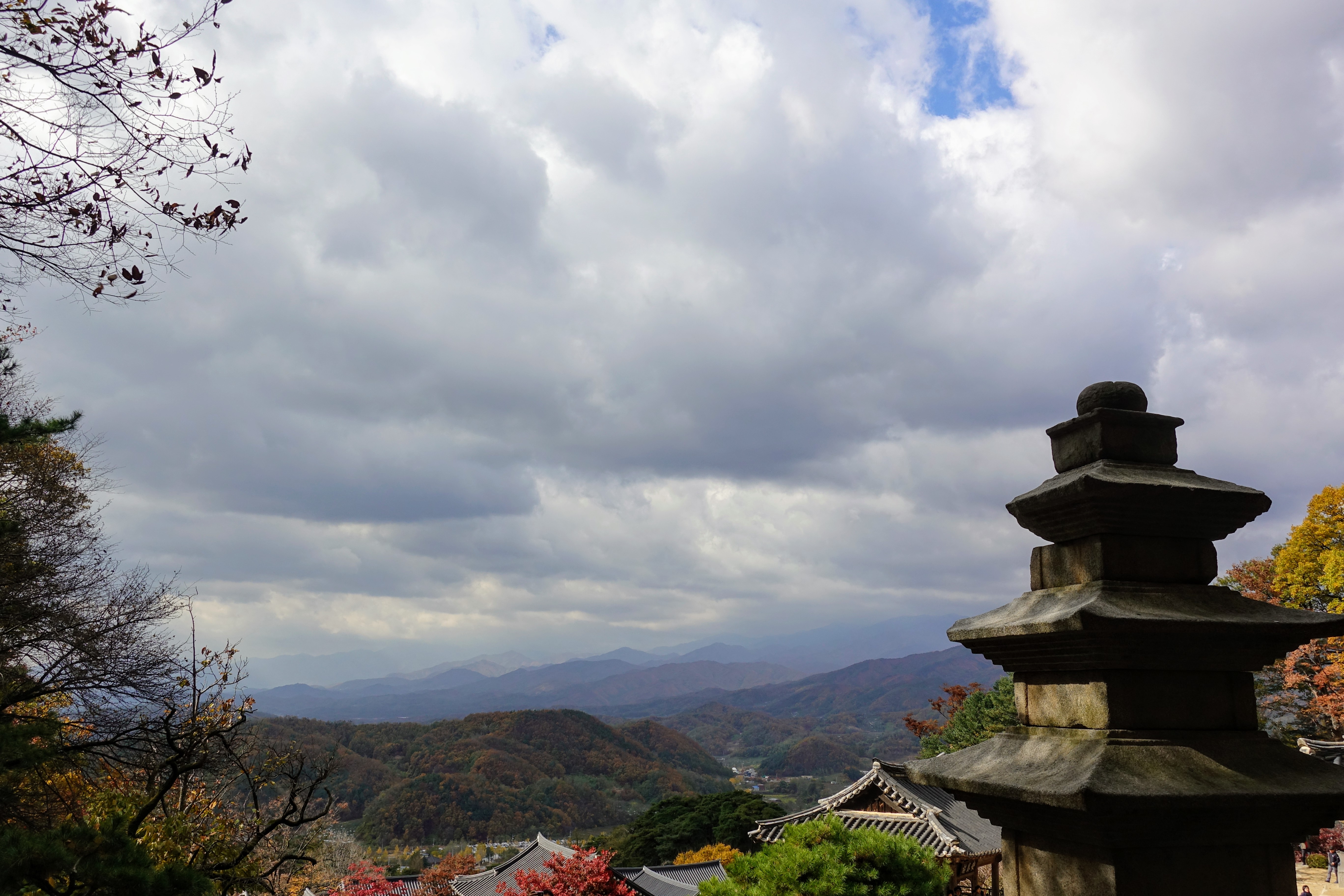
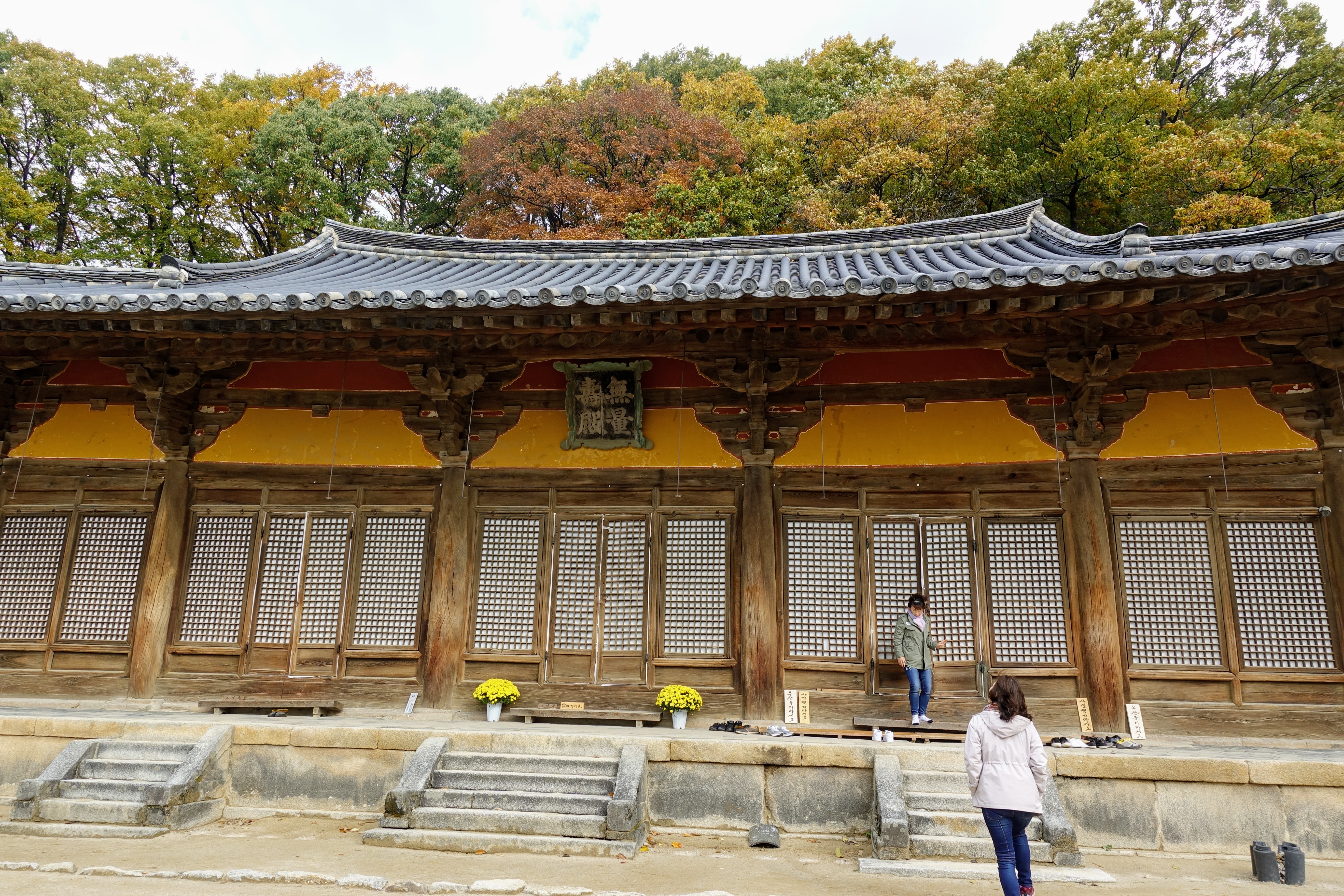
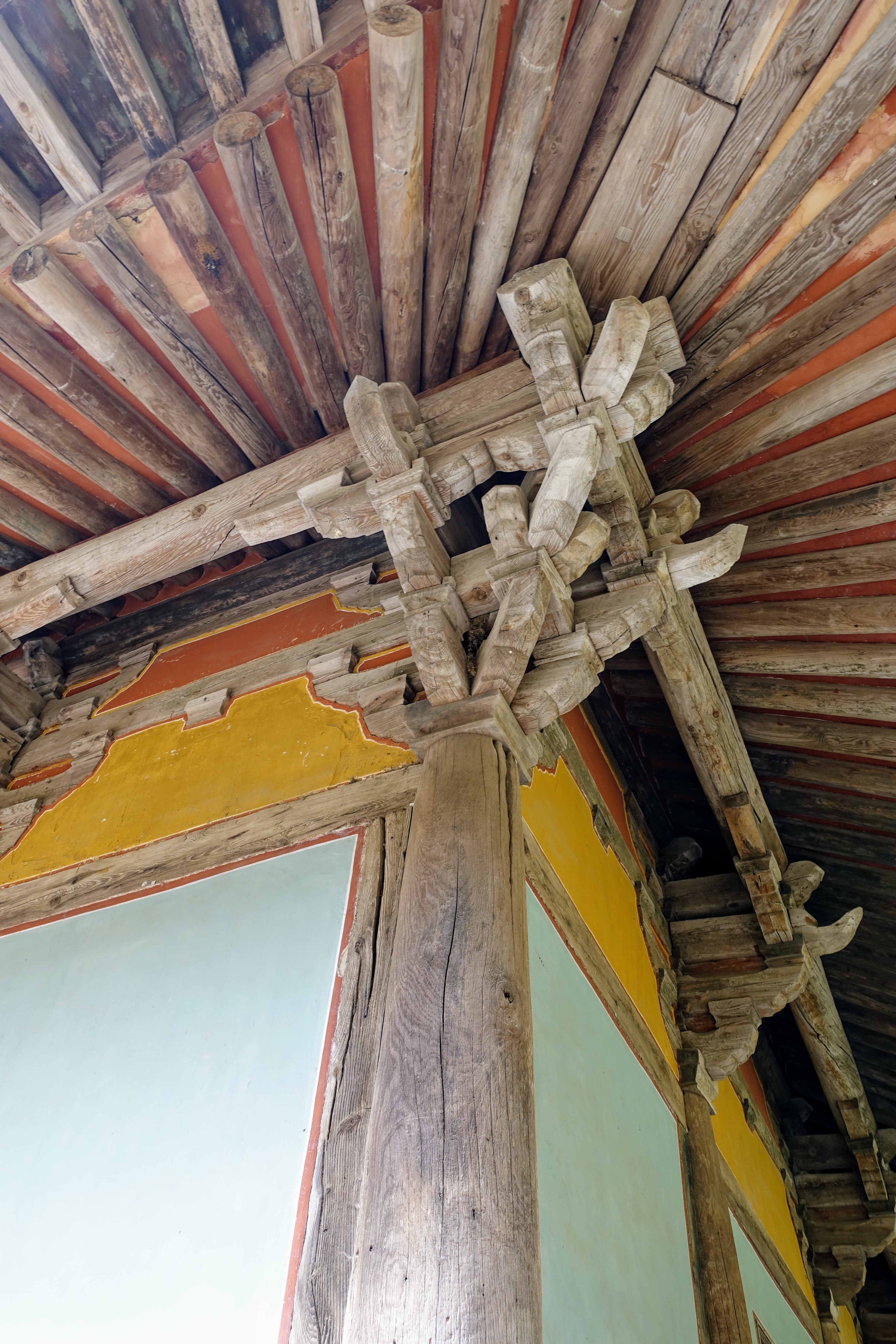
Here you can see the unusual support structure, quite different from the usual Joseon style found in most Korean temples. 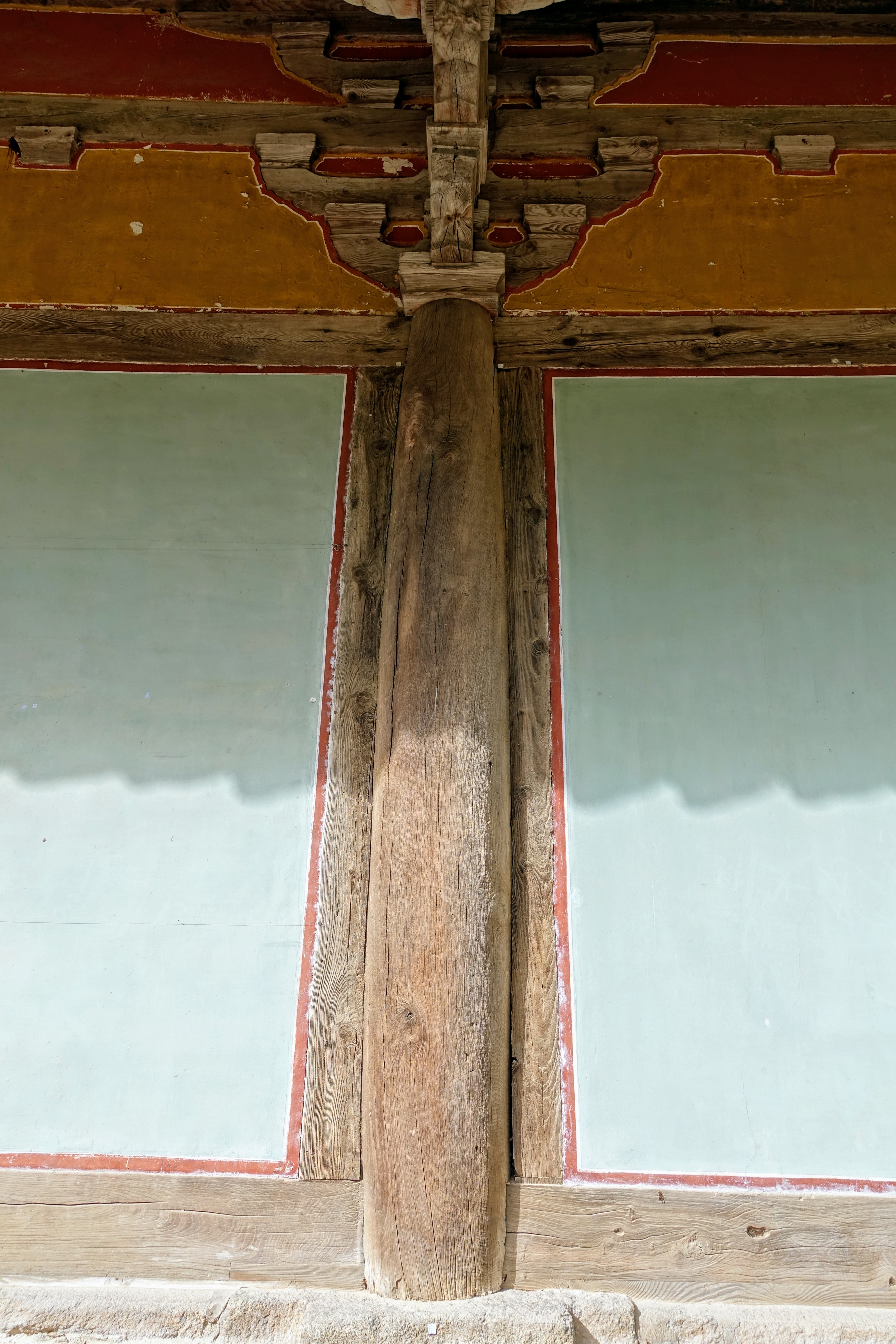
The main columns have a “belly” shape, widening in the midsection and tapering again at the base.

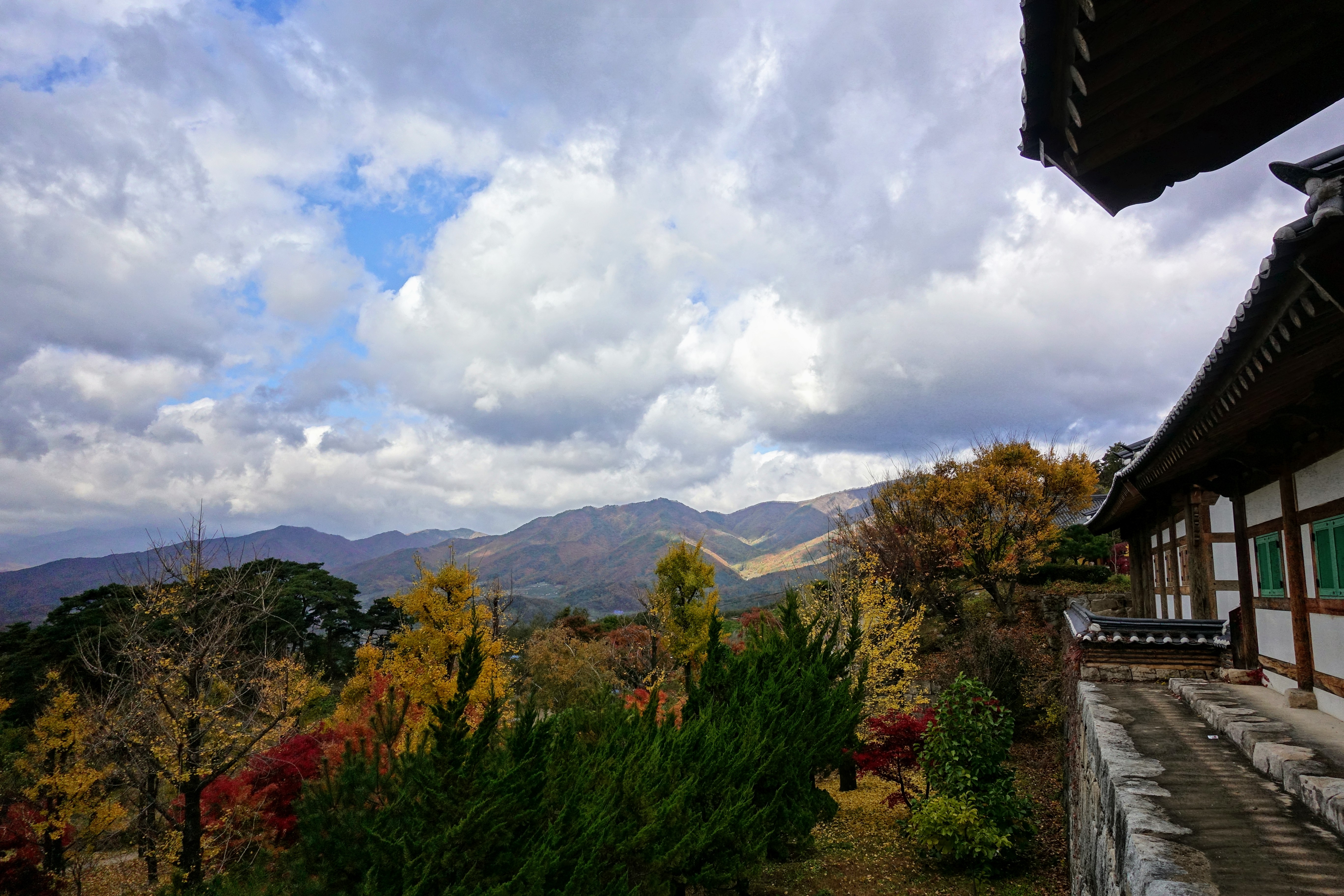
We were lucky to get to the temple early. By the time we were leaving, around lunchtime, the busloads of tourists had turned this quiet autumnal refuge into a circus, or really just a low-grade Korean amusement park without any rides. It was time to get away.
Mountain mushrooms
Not far away, near Punggi, across from the Sosu Seoweon (Confucian academy), we saw a sign for a restaurant and decided to pull in. It was styled like an old hanok, and we were shown to a private room.
As we were entering, I saw — and smelled — a bubbling dish being brought to the next room over, a heady, rich brew of earthy mushrooms. “Whatever that is,” I said, “we’re ordering that.”
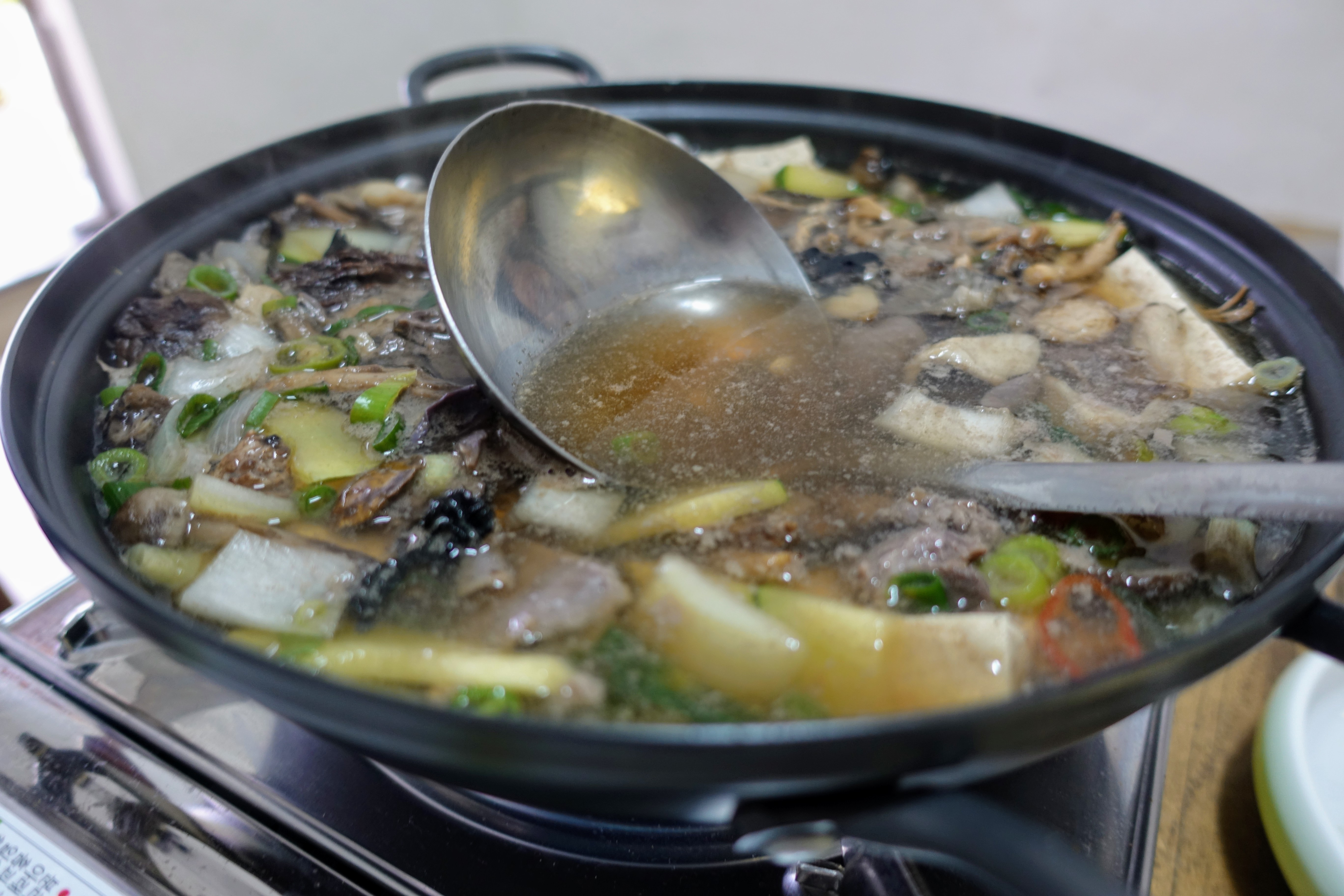
We had lucked into the last available seating at Dageum (다금), an apparently famous restaurant about which I can find nothing online. Not long after we arrived, two buses showed up, but with our private room, we hardly noticed the crowds. Each dish is handmade, and the man who runs the place goes out into the mountains to gather the wild ingredients. In the jangol, you could taste and savor each different type of mushroom: this one purple and astringent, that one almost like kelp, another woody and chewy. We had the jangol plus a wild mushroom pancake, plus a bunch of side dishes, all for 40,000 won.
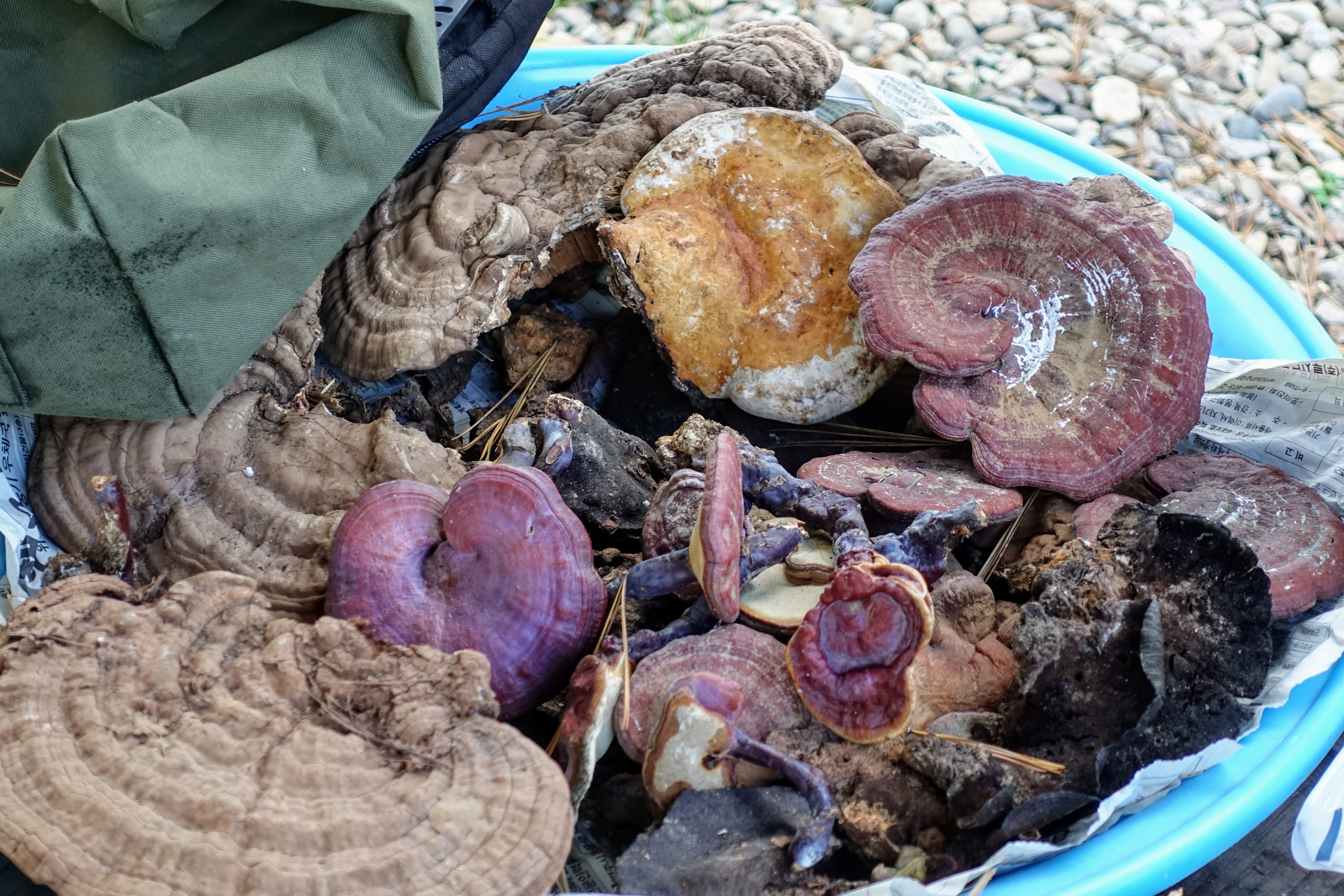
We rounded out the day with a visit to Sosu Seowon, Korea’s oldest Confucian academy. Unlike Buddhism, Confucianism is no longer an active faith, and these places, which were always austere, are now a bit sad too. But the autumn leaves were just as beautiful there, and you could feel some sense of what it must have been like for the scholars to observe the passing of the seasons in this beautiful place dedicated to learning and practicing the virtuous life.
And then we drove home, back to Seoul, through the traffic and the city lights and up into an apartment tower, where we ordered in Chinese food.

